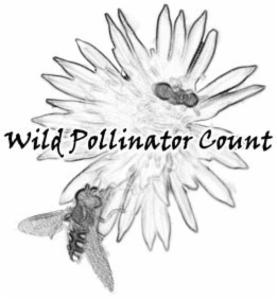Search for Hyporhamphus australis returned 4,679 results.
Refine results
Refine results
Section
- Species (3,422)
- Site Page (621)
- Data resource (322)
- Biodiversity Science project (159)
- Institution (50)
- Support article (39)
- Common Name (21)
- Data provider (21)
- Species list (12)
- Spatial layer (8)
- Collection (4)
Taxonomic rank
- Species (1,855)
- Unranked (1,131)
- Variety (271)
- Subspecies (146)
- Form (12)
- Genus (3)
- Subvariety (2)
- Infraspecific Name (1)
- Species Group (1)
Image available
- Yes (537)
Lifeforms
- Insects and Spiders (543)
- Crustaceans (106)
- Fungi (84)
- Molluscs (81)
- Fish (61)
- Birds (23)
- Mammals (13)
- Reptiles (12)
- Amphibians (2)
Taxonomic status
- Accepted (1,490)
- Synonym (1,270)
- Heteroptypic Synonym (281)
- Homotypic Synonym (212)
- Misapplied (55)
- Miscellaneous Literature (38)
- unreviewed (32)
- Pro-parte Synonym (15)
- Excluded (12)
- unreviewedSynonym (12)
- Inferred Accepted (2)
- Subjective Synonym (2)
- Inferred Unplaced (1)
Conservation status in Australia
- Endangered (10)
- Vulnerable (10)
- Critically Endangered (3)
Conservation status in ACT
- Endangered (1)
- Vulnerable (1)
Conservation status in NSW
- Vulnerable (7)
- Endangered (6)
- Critically Endangered (1)
- Extinct (1)
Conservation status in QLD
- Vulnerable (6)
- Endangered (4)
- Near Threatened (2)
Conservation status in VIC
- Endangered (10)
- Critically Endangered (7)
- Vulnerable (5)
Conservation status in TAS
- Endangered (6)
- Rare (6)
- Extinct (1)
Conservation status in SA
- Rare (7)
- Vulnerable (5)
- Endangered (4)
Conservation status in WA
- Endangered (4)
- Critically Endangered (3)
- Priority 1: Poorly-known species (3)
- Priority 3: Poorly-known species (3)
- Priority 4: Rare, Near Threatened (3)
Conservation status in NT
- Endangered (3)
- Vulnerable (1)
-
Biodiversity Science project: Important Bird and Biodiversity Areas
Important Bird and Biodiversity Areas (IBAs) are sites of global bird conservation importance and BirdLife Australia has identified and documented almost all of the Australian IBAs. IBAs are priority areas for bird conservation and we aim to monitor birds at our IBAs, advocate their importance to government, and work with land-holders and other local people to conserve them. In 2016 BirdLife Australia is starting the Easter Health-check for ‘Important Bird and Biodiversity Areas’ (IBAs)...

-
Support article: What licence should I use?
The ALA encourages the use of the latest version of the Creative Commons Australia or international jurisdiction licenses and our contribution forms are geared to this type of license. The Creative Commons Australia Licenses that are available when sharing via the ALA are: Creative Commons Zero - CC0 Attribution – CC BY Attribution-Noncommercial – CC BY-NC The ALA offers an integrated set of biological observations to Australian and international researchers and the community...
-
Biodiversity Science project: HHR East Coast Whale Monitoring
This project monitors and assess whale and dolphins along the east coast of Australia. Currently surveys are being undertaken from the Gold Coast, Sunshine Coast and Coffs Harbor.

-
Biodiversity Science project: Community Whale Shark
Community Whale Shark is a citizen science project working with a network of businesses and the community to research and record Whale Shark sightings along the East Coast of Australia.
-
Biodiversity Science project: Biodiversity of the Western Volcanic Plains
The flora and fauna of the Western Volcanic Plains, Victoria, Australia is unique with many species endemic to ecosystems within this bioregion. Over 160 animals and over 250 plant species are comprehensively described, most with multiple images taken within the natural habitat of the species. Identifying animal calls are provided with distribution maps including both past and current sightings recorded by the Atlas of Living Australia...

-
Biodiversity Science project: Leaf Tying Moth (Hypocosmia pyrochroma) - a biological control agent of Cat's Claw Creeper (Dolichandra unguis-cati) in the Burnet-Mary catchments
Cat’s Claw Creeper (Dolichandra unguis-cati), a Weed of National Significance, is a target for biological control in Australia. The Leaf-Tying Moth (Hypocosmia pyrochroma), a native of tropical South America, was released as a biological control agent for Cat’s Claw Creeper (CCC) in Australia between 2007 and 2010...

-
Biodiversity Science project: Purple Loosestrife Volunteers
People living at many latitudes in North America, Eurasia, and Australia are volunteering to help assess purple loosestrife (Lythrum salicaria) in their regions. The program is part of Dr. Beth Middleton's project to compare the role of purple loosestrife in its native and invasive habitats. Purple loosestrife is native to Eurasia but invaded northern North America after accidental introduction in the 1800s...
-
Biodiversity Science project: Wild Pollinator Count
Australia has lots of wild pollinator insects that are often overlooked. European honey bees get a lot of attention because they are an adaptable, generalist forager, which means they are happy to visit almost any flower, in most climate zones. They are also a social species, so their hives are easy to domesticate and manage. However, many native insects also contribute to pollination in crops and gardens all around the country...

-
Biodiversity Science project: Northern Territory WildWatch
All sighting records will be entered into the NT Fauna Atlas. Fauna Atlas records can be accessed via NR Maps and the Atlas of Living Australia. Personal datasets of fauna observation can also be submitted to the Fauna Atlas by email.

-
Biodiversity Science project: Rare Flora of the Sydney Basin Bioregion
Collecting and archiving records of rare (e.g. RoTAP) flora species across the Sydney Basin Bioregion. Data collected will be uploaded directly into the Atlas of Living Australia for use in conservation planning by research institutions, conservation organisations and government bodies.
